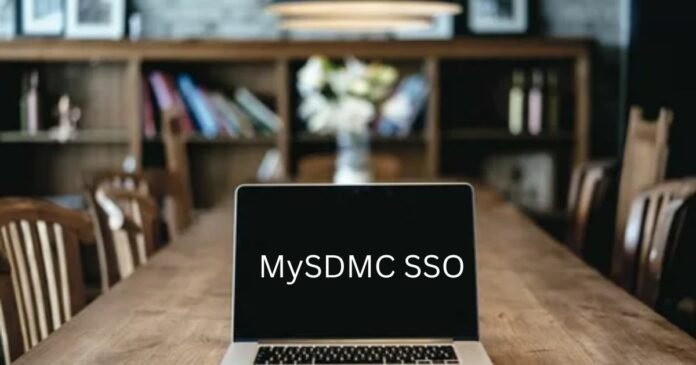Are you tired of juggling multiple passwords for different applications? MYSDMC SSO (Single Sign-On) is here to simplify your digital life. In this comprehensive guide, we’ll dive deep into what MYSDMC SSO is, how it works, and why it’s becoming an essential tool for businesses and individuals alike.
What is MYSDMC SSO?
MYSDMC SSO, short for Single Sign-On, is a cutting-edge authentication system that allows users to access multiple applications with just one set of login credentials. This innovative technology streamlines the login process, enhancing both security and user experience.
How Does MYSDMC SSO Work?
At its core, MYSDMC SSO operates on a simple yet powerful principle. Here’s a breakdown of the process:
- Initial Authentication: When you first log in, you’ll enter your credentials on the MYSDMC SSO portal.
- Token Generation: Upon successful authentication, the system generates a secure token.
- Seamless Access: This token is then used to grant you access to all connected applications without requiring additional logins.
- Session Management: MYSDMC SSO maintains your session across various platforms, ensuring a smooth user experience.
The beauty of this system lies in its simplicity for the end-user, while robust security measures work tirelessly behind the scenes.
Benefits of MYSDMC SSO
Implementing MYSDMC SSO comes with a host of advantages:
- Enhanced Security: By centralizing authentication, MYSDMC SSO reduces the risk of password-related vulnerabilities. According to a report by LastPass, 91% of people know that using the same password for multiple accounts is a security risk, yet 66% continue to do so. SSO helps address this issue.
- Improved User Experience: With just one set of credentials to remember, users can navigate between applications effortlessly. This streamlined process can significantly boost productivity.
- Reduced IT Support Costs: Fewer password-related issues mean less strain on IT support teams. A study by Okta found that companies can save up to $1 million per year in IT support costs by implementing SSO.
- Increased Adoption of Cloud Services: SSO makes it easier for organizations to integrate and manage multiple cloud applications, fostering digital transformation.
- Compliance Support: MYSDMC SSO can help organizations meet various compliance requirements by providing centralized control over user access and authentication.
Setting Up MYSDMC SSO
Implementing MYSDMC SSO in your organization involves several key steps:
- Assessment: Evaluate your current systems and identify which applications need to be integrated with SSO.
- Choose a Protocol: Select an SSO protocol that best fits your needs, such as SAML, OAuth, or OpenID Connect.
- Configuration: Set up the SSO service provider and configure your applications to work with it.
- User Management: Import user data and set up appropriate access levels.
- Testing: Thoroughly test the system to ensure smooth operation across all integrated applications.
- Training: Provide user training to ensure a smooth transition to the new SSO system.
Best Practices for MYSDMC SSO Implementation
To maximize the benefits of MYSDMC SSO, consider these best practices:
- Use Multi-Factor Authentication (MFA): Combine SSO with MFA for an extra layer of security. According to Microsoft, MFA can block 99.9% of automated attacks.
- Regular Audits: Conduct periodic audits of user access rights to maintain security and compliance.
- Implement Strong Password Policies: Even with SSO, ensure users create strong, unique passwords for their main account.
- Plan for Scalability: Choose an SSO solution that can grow with your organization’s needs.
- Provide Self-Service Options: Enable users to reset passwords or update their information without IT intervention.
Common Challenges and Solutions
While MYSDMC SSO offers numerous benefits, it’s not without its challenges. Here are some common issues and how to address them:
- Single Point of Failure: If the SSO system goes down, it could potentially lock users out of all applications. Solution: Implement robust backup and failover systems.
- Integration Complexity: Some legacy applications may not easily integrate with SSO. Solution: Work with IT professionals to develop custom connectors or consider updating legacy systems.
- User Resistance: Some users may be hesitant to adopt new login procedures. Solution: Provide clear communication about the benefits and offer comprehensive training.
The Future of MYSDMC SSO
As technology evolves, so does MYSDMC SSO. Here are some trends to watch:
- Biometric Authentication: Integration of fingerprint or facial recognition for even more seamless login experiences.
- Artificial Intelligence: AI-powered systems that can detect and respond to unusual login patterns in real-time.
- Blockchain Integration: Exploring the use of blockchain technology to enhance the security and decentralization of SSO systems.
Conclusion
MYSDMC SSO represents a significant leap forward in managing digital identities and access. By simplifying the login process, enhancing security, and improving user experience, it’s becoming an indispensable tool for modern organizations. As you consider implementing MYSDMC SSO, remember that the key to success lies in careful planning, robust implementation, and ongoing management.
